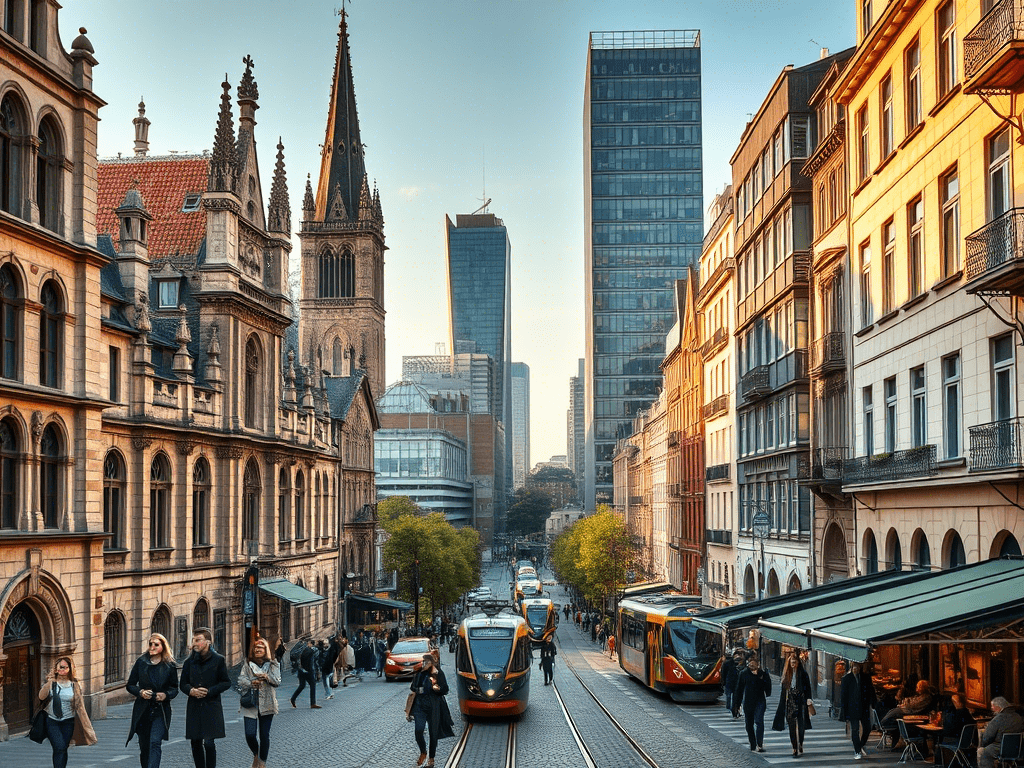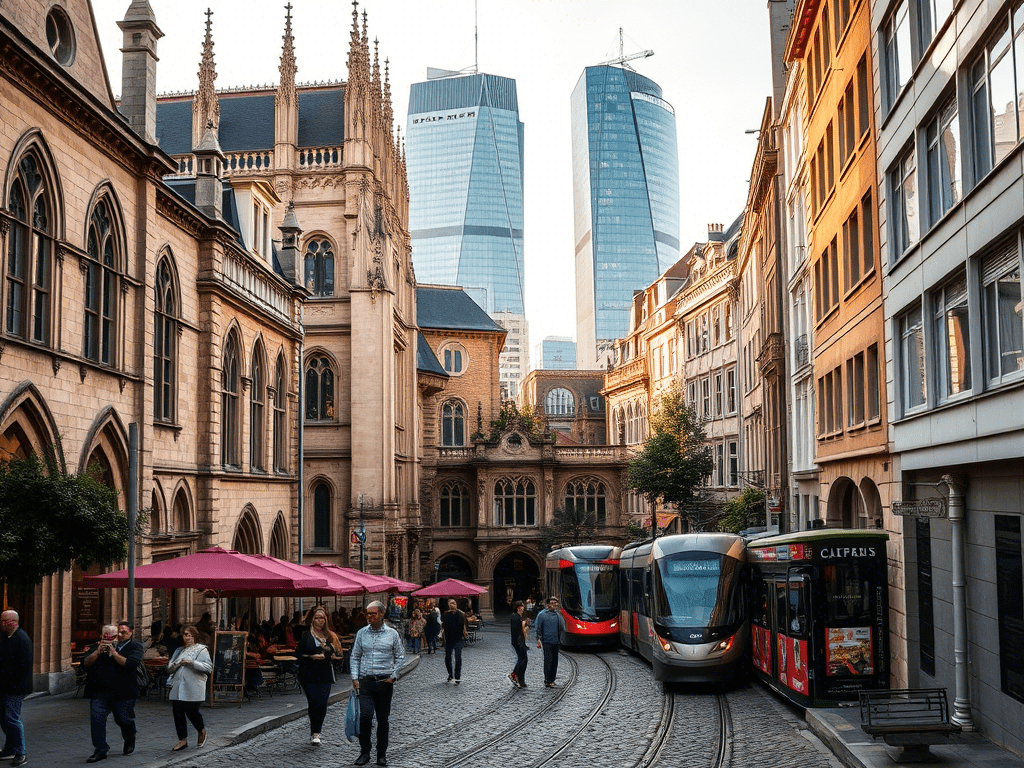Exploring Cities in Europe: Where History Meets Modern Magic
H2: Introduction to Europe’s Timeless Appeal
Picture this: you’re sipping espresso at a café nestled in a 17th-century square, then minutes later, you’re browsing cutting-edge street art in a revitalized industrial district. Cities in Europe masterfully blend centuries-old heritage with bold, contemporary innovation, creating travel experiences unlike anywhere else. Whether you’re marvelling at Roman ruins or tapping into a buzzing tech hub, these urban gems prove that history and modernity aren’t rivals—they’re partners in crafting unforgettable adventures. Let’s dive into how cities in Europe pull off this timeless balancing act.
H2: Historical Foundations of European Cities
From crumbling amphitheaters to cobblestone alleys, Europe’s past is etched into its cityscapes. UNESCO sites and medieval castles stand as proud reminders of bygone eras, while modern life hums around them.
H3: Rome: Layers of Empire and Innovation
Rome is a living history book. The Colosseum and Roman Forum whisper tales of gladiators and emperors, but cross the Tiber River to Testaccio, and you’ll find a trendy neighbourhood brimming with artisanal markets and rooftop bars. Pro tip: Stay at Hotel San Anselmo (affiliate link), a boutique hotel in a 19th-century villa, to experience old-world charm with modern luxuries.
H3: Athens: Ancient Gods Meet Urban Vibes
Beneath the Acropolis’s watchful gaze, Athens’ Psirri district thrums with hip coffee shops and vibrant murals. Grab a freddo cappuccino at a retro café, then join a street art tour to see how modern creatives reinterpret Greek mythology.
H3: Prague: Gothic Grandeur and 21st-Century Life
Prague Castle and the Astronomical Clock draw crowds, but the city’s modern soul shines in spots like DOX Centre for Contemporary Art. Don’t miss the “Gulliver Airship” installation—a surreal bridge between past and present.
H2: Modern Innovations Enhancing Heritage
Europe’s cities aren’t stuck in the past. They’re reinventing themselves with sustainable design and tech-forward spaces—all while honouring their roots.
H3: Berlin: War Memorials and Cutting-Edge Culture
The Brandenburg Gate and Holocaust Memorial anchor Berlin’s history, but Kreuzberg’s co-working spaces and vegan eateries fuel its future. Rent a bike (affiliate link) to zip between eras effortlessly.
H3: Barcelona: Gaudí’s Legacy and Sustainable Design
The Sagrada Família’s spires coexist with solar-powered buildings in @22, a green tech district. Book a guided tour (affiliate link) to explore Gaudí’s masterpieces and Barcelona’s eco-initiatives in one trip.
H3: Rotterdam: Post-War Rebirth and Avant-Garde Architecture
Rotterdam’s WWII destruction gave birth to a playground for architects. The Cube Houses and Markthal market are must-sees—stay at the SS Rotterdam Hotel (affiliate link), a retrofitted ocean liner, for full immersion.
H2: Cultural Fusion: Traditions Meet Trends
Europe’s heart beats in its festivals, food, and art, where folklore collides with futuristic flair.

H3: Edinburgh: Medieval Festivals and Fringe Modernity
The Royal Mile transforms during the Edinburgh Festival Fringe, where bagpipers share sidewalks with avant-garde performers. Snag tickets early (affiliate link) for can’t-miss shows.
H3: Lisbon: Fado Music and Hipster LX Factory
In Alfama, mournful fado melodies echo through narrow lanes. Then head to LX Factory, a creative hub in a former textile mill, for craft beer and indie bookstores.
H3: Vienna: Classical Concerts and Street Art Scenes
Catch a Mozart concert at the Staatsoper, then wander to MuseumsQuartier to see Baroque palaces framed by graffiti murals.
H2: Sustainable Tourism in Historic Cities
How do cities preserve their past while protecting the planet? Let’s explore green initiatives shaping Europe’s future.
H3: Copenhagen: Viking Roots and Carbon-Neutral Goals
Copenhagen aims to achieve carbon neutrality by 2025. Rent a bike to explore Viking ships at the National Museum, then recharge at a zero-waste café.
H3: Amsterdam: Canal Preservation and Green Tourism
Sleep on a historic houseboat (affiliate link) and join plastic-free canal tours. Pro tip: Visit the “Green Junk” floating market for eco-friendly souvenirs.
H3: Zurich: Medieval Old Town and Zero-Waste Cafés
Zurich’s cobblestone streets lead to pioneering spots like KLE café, where even the napkins are compostable.
H2: Tips for Experiencing the Best of Both Worlds
H3: Plan Visits Around Off-Peak Seasons
- Why: Avoid crowds at the Louvre and snag deals on chic city hotels.
- When: Try late April or October for mild weather and local festivals.
H3: Use Public Transport to Explore Eras
- Budapest: Tram 2 connects Buda Castle with ruin bars—a ride through centuries.
- Porto: Historic trams rattle past modern art galleries.
H3: Stay in Adaptive-Reuse Accommodations
- Spain: Sleep in a converted monastery at Parador de Cuenca (affiliate link).
- Germany: Book a room at 25hours Hotel (affiliate link), a former factory transformed into a design haven.
H2: Conclusion: Europe’s Cities as Living Museums
Cities in Europe aren’t just destinations—they’re time machines. Where else can you breakfast in a medieval square, lunch in a solar-powered café, and dance in a repurposed warehouse? Pack your curiosity (and comfy shoes), and let these urban wonders rewrite your travel story.
Ready to Explore?
Book your eco-friendly stay or guided tour through our affiliate links above—your support keeps our guides free! Share your favourite #CitiesInEurope moments on Instagram, and tag us for a chance to be featured.
Disclosure: This post contains affiliate links. If you purchase through them, we may earn a small commission at no extra cost to you. Thanks for supporting our blog!
SEO Keywords: Cities in Europe, sustainable tourism, cultural fusion, adaptive reuse, UNESCO sites, modern architecture, historic landmarks, eco-friendly travel, urban innovation.

